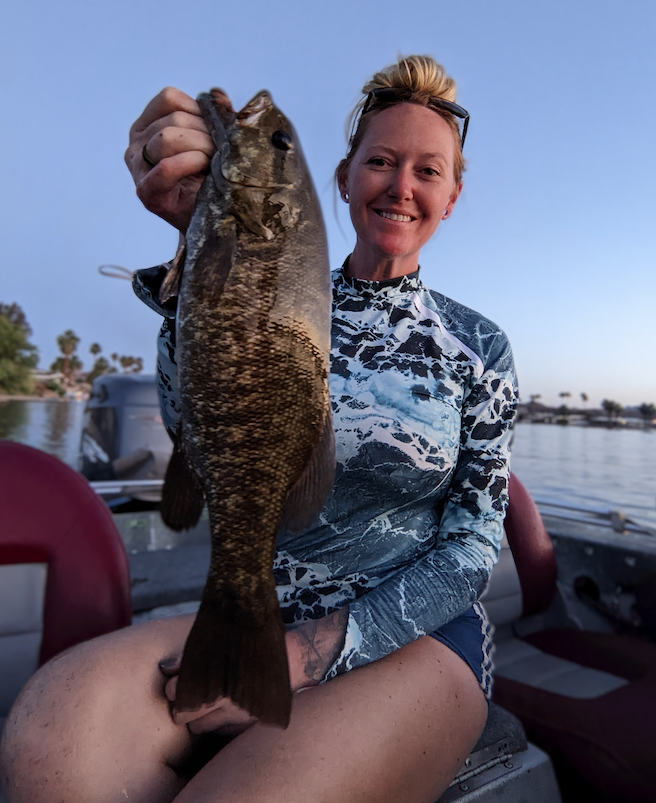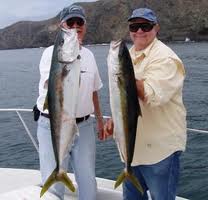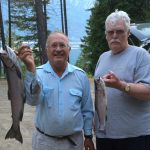
 The staples of SoCal wintertime fishing are rockfish, lingcod, and calico bass. Radical topography is where you’ll find most of these fish, and that is what gives the Santa Barbara Channel its advantage. We have the best fish-holding structure, at every depth imaginable, along the entire SoCal coast.
The staples of SoCal wintertime fishing are rockfish, lingcod, and calico bass. Radical topography is where you’ll find most of these fish, and that is what gives the Santa Barbara Channel its advantage. We have the best fish-holding structure, at every depth imaginable, along the entire SoCal coast.
Fishing for rockfish can be divided into deepwater and shallow water fishing. Deepwater means working in more than 150 feet of water, and sometimes up to 400 feet or more. At these depths, great numbers of red rockfish can be found. Although most are generically referred to as red snapper, a number of species are caught, such as vermilion, starrys, bocaccio, and chilis. There are also bigger rockfish such as cow cod roaming deepwater structure zones.
Equipment and techniques are common to deepwater rockfishing anywhere; a large reel, perhaps with a oversize power handle, a stout rod with a roller tip, heavy line, and a multi-hook gangion. The new breed of spectra lines are perfect for this type of fishing because they are super sensitive and have almost no stretch. This means you can feel smaller fish bite at great depths and larger fish can’t stretch the line enough to get into the rocks and break you off. The gangion hooks are usually decorated with various materials to imitate natural forage. It is wise to sweeten the hooks with scented plastic tails or bait. Squid is a durable and effective bait, however shrimp, octopus, and baitfish also work well.
Shallow water rockfish include chucklehead, sheephead, and a couple of rockfish which are called basses; johnny bass and sugar bass. Ocean whitefish are also commonly caught. These are all good eating fish, and the lesser depth gives them a chance to put up a much better fight. Medium action jigsticks and Penn Jigmaster-size reels are well suited for this type of fishing. Single or double hook rigs are better here than multi-hook gangions because it doesn’t take long to reel up, re-bait, and drop back down, which makes it feasible to bring up each fish as it is hooked.
The mighty lingcod is the king of winterfish. These big mean prehistoric-looking fish are aggressive, territorial, and stubborn. They have a set of large sharp teeth which perfectly match their bad attitude. These are the only fish I nickname after a dinosaur. Aboard my charterboat, the WaveWalker, any lingcod over ten pounds is called a “lingasaur”! They are caught at all depths during the winter, and since they don’t have an air bladder they fight hard all the way to the boat, even from deepwater seamounts. One more thingÉ they taste great.
Many anglers want to specifically target lingcod. The two most effective techniques are jigs and single large live baits. Jigs are simple and fun to use, and they are lethal against lingcod. You see, lingcod have a fatal attraction to chromeÉ they can’t resist a shiny object bouncing up and down in front of their nose. Red and orange colors which match rockfish are also productive. The best technique is to drop it down into the rocks and then jig it actively and repetitively within a few feet of the bottom. Large live baits are also very effective on lingcod. A big shiny sardine is one of my favorite baits, however the best live bait of all for a lingcod is a sand dab which can be caught on sandy bottoms near rocky structure.
Calico bass are resident gamefish and feed throughout the year. Techniques change during the winter when these fish tend to feed a little lower in the water column. When water temps are in the mid-fifties or lower, I rig up my passengers with sliding sinkers held away from the hook by splitshot. These rigs get the bait down deeper to where the fish are feeding. Live anchovies or small sardines are always good live baits. Plastic tails on leadheads will take plenty of bass over the shallow reefs, but heavier leadheads work best during the winter, because the fish spend more of their time a little deeper. Swimbait types of plastic tails with big sparkle flakes are good choices in cold water because they impart plenty of action and provide sufficient flash to allow fish to find them in murky waters after winter rains.



